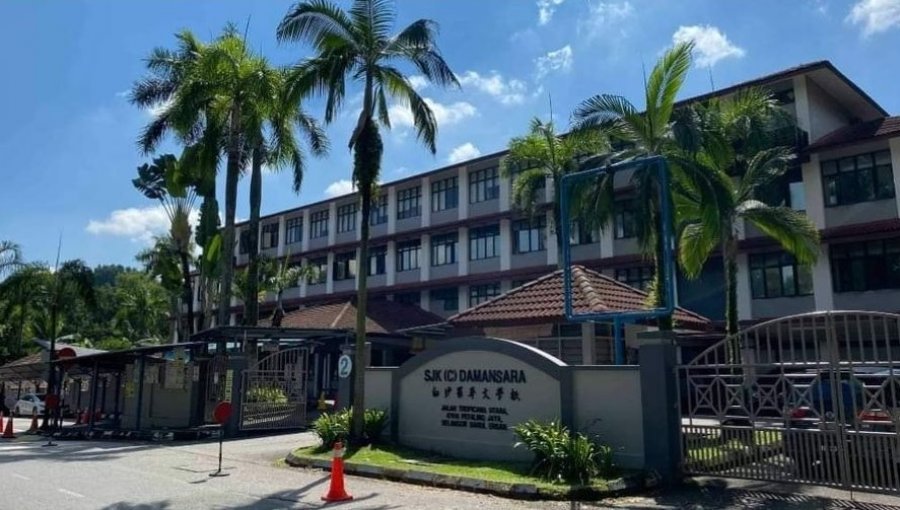距离现在已经超过20年的“白小事件”记载了当代热爱华文教育人士有血有泪的一段历史往事。始于2001年的白小事件是由于当时的教育部和白小董家教在迁校问题上意见相左,引发华社及各民主团体的反对,发起“救救白小”运动。
时任政府强行关闭白小原校依然历历在目,迫使一众白小学生转校到附近的学校。凡走过必留痕迹,在经历308大选后,当时的执政联盟在面临政治困境下转态宣布让关闭了2923天的白小原校,以改名的方式重开,这也意味著“救救白小”的抗争成功。
不过,当年迁移到丽阳镇的白沙罗华小,如今却急需民众的慷慨解囊,“救救白小2.0”,以完善学校的硬体设备。坐落在丽阳镇的白小现约有1800位学生和100位老师,经历了数阶段兴建校舍,校内基础的设备应有尽有。然而,美中不足的是这所设立在城镇的华小居然没有礼堂。这使到该校的周会或大型活动,都是在开放式的集会处进行。
这也令白小成了八打灵县10所华小中唯一一间没有礼堂的学校。巴生河流域的八打灵县是全马经济活动的中心,各种设备应有尽有,居民经济收入和生活水平都高于国内其他地区,许多跨国企业的总部和厂房都位于这个区域,然而却有一所欠缺礼堂的华小,叫人情何以堪。
追溯历史,白小的全名是白沙罗小学,原本学校以“华侨”为名,上世纪30年代由杨康先生创办,迄今已经有93年的历史。那时白沙罗路一带的居民多以割胶为生,由于家庭经济拮据,再加上交通不方便,居民们需要排除重重阻碍才能把孩子送到首都去求学。于是,在杨康先生的号召和带领创办了白小,为居民纾解载送孩子的烦恼,也让孩子可以更方便到学校。
如今位于丽阳镇的白小,因没有礼堂,同学们平时只能使用开放式集会处进行各项活动如体育和课外活动。然而,开放式的集会处的四周都是课室,课室也没有空调设备。当歌唱或演讲比赛在进行时,难免会干扰到班级里正在上课的学生。
同时,开放式集会处的舞台会被雨水溅湿,每次办活动都要看天气的脸色。如果当天天气恶劣,下起倾盆大雨的话,所进行的活动就要被迫中断。每逢雨季,学生就要错过活动的机会。别忘了,歌唱和演讲比赛都需要配合良好的音响设备,效果才会更佳。试问,在没有适合场地的情况下,要如何举办县级的比赛,让各校学生共聚一堂一同交流和学习呢?
成本高涨
再者,在没有正规羽球场的情况下,羽球校队也唯有到校外进行训练。有了礼堂,讲座会、阅读会、羽球或各类球类运动就可以在宽敞的礼堂内进行。除了可以避免学生们饱受日晒雨淋之苦,也可以避免由于天气不佳而取消室外的训练活动。
在讲求“德智体美劳”五育,在校内贯彻以体育为命脉的精神确实可以充实学生们的人生。当然,校方可以善用礼堂从校内发掘对各项运动有热诚的学生,为国家培育更多未来的“李宗伟”,实现奥运金牌的愿景。
有鉴于对礼堂的需求紧迫,校方已经成立工委会并启动兴建礼堂的工程。该校多用途礼堂工程分为两个阶段:第一阶段预计耗资600万令吉,第二阶段则将斥资约400万令吉。这座多用途礼堂将耗资大约1000万令吉。在受疫情影响和东欧地缘政治危机引发百物涨价,让建筑成本雪上加霜。此外,由于地形特殊,这座礼堂需要依斜坡而建,施工工程方面也被迫承担额外费用。
白小虽然坐落于社会经济相对富裕的丽阳镇,可是学校连一座礼堂都没有,学生在活动方面难免会受到一定限制。没有礼堂的学校就好比一所没有厨房的屋子,如果主人家长期需要向邻居借厨房,既不方便自己,也麻烦他人。正所谓“工欲善其事,必先利其器”,在追求知识盛宴里,一所千多人的学校,缺了礼堂,无疑是令人遗憾的。同样的,众多师长和学生的白小也需要肩负完成这项伟大工程的重任。
礼堂不只是一座建筑物,更是凝聚学校大家庭的精神象征,也是社会对华文教育热衷的最佳凭证。
郑荣信《“救救”白小2.0》英文稿:“Save” SJK (C) Damansara 2.0
More than 20 years have passed since the "Save SJK (C) Damansara" (commonly known as SOS Damansara) recorded the blood and tears of contemporary Chinese educators. The SOS Damansara Incident started in 2001 when there was disagreement on the relocation of the school between the Ministry of Education and board of directors and Parent Teacher Association of SJK (C) Damansara. That had triggered opposition from the Chinese community and various non-government organizations and launched a " Save SJK (C) Damansara" campaign.
The government forced the closure of the original SJK (C) Damansara, which forced many pupils to transfer to nearby schools. The incident is still vivid in the memories of Chinese educators. After the 308 general election and faced with political difficulties, the ruling coalition changed mind and announced that it would reopen the school, which had been closed for 2,923 day, but renama as SJK (C) Chung Hwa Damansara. This also means that the fight to "save SJK (C) Damansara" had succeeded.
However, SJK (C) Damansara, which relocated to Tropicana City, is now in urgent need of the public's generosity, as the school has been relocated for many years, the purpose of "Save SJK (C) Damansara 2.0" is to improve the school's infrastructure. Located in the Tropicana City, SJK (C) Damansara has approximately 1,800 students and 100 teachers. It has gone through several stages of development and is well-equipped. However, the fly in the ointment is that the school has no auditorium hall. At present, weekly assemblies are held in an open assembly area.
Besides, SJK (C) Damansara is the only one of the 10 chinese primary schools (SJKC) in Petaling without an auditorium hall. Petaling district in the Klang Valley is also the center of Malaysia's economic activity, with higher income and living standards than other regions in the country. It also houses the headquarters and factories of many multinational companies in the region.
SJK (C) Damansara, original was first given "overseas Chinese" as its name, in the 1930s founded by Mr. Yang Kang. It has 93 years of history year to date. At that time, residents in the vicinity of Jalan Damansara mostly made a living by rubber tapping. Due to earning meager living and inconvenient transportation, residents had to overcome numerous obstacles to send their children to study in the capital. Therefore, under the call and leadership of Mr. Yang Kang, SJK (C) Damansara was founded to relieve the troubles of sending children to distant area and make it more convenient for children to go to school.
Students can only use the open space assembly area for sports and extracurricular activities. However, the open space assembly area is surrounded by classrooms, which are not air-conditioned. When singing or speaking competitions are going on, it is inevitable to disturb the students in the class.
Urgent need for an auditorium hall
Since the stage of the open space assembly area is often drenched by rain water, all held events are at the mercy of the weather. If the weather is bad and it rains cats and dogs, the event is interrupted. During the rainy season, students would miss out on activities. Don't forget, both singing and speaking competitions need a good sound system to be more presentable. In the absence of suitable venues, how can district level competitions be held so that students from all schools can communicate and learn together under one roof?
Moreover, in the absence of a proper badminton court, the school badminton team had to go out for training. With the auditorium hall, lectures, reading meetings, badminton or all kinds of ball games can be carried out in the spacious hall. In addition to protecting students from exposure to the sun and rain, they can also avoid canceling outdoor training activities due to bad weather.
In the pursuit of five different dimensions, namely moral, cognitive, physical, social and aesthetic in the school, one must carry out the spirit of emphasizing sports as the lifeblood which can enrich students' life. Of course, the university can use the auditorium hall to scout for students who are passionate about all sports within the school, and cultivate more future "Lee Chong Wei" for the country to realize the vision of an Olympic gold medal.
In view of the urgent need for an auditorium hall, the school has set up a working committee and started the construction of the auditorium hall. The multi-phase auditorium hall project is divided into two phases, with the first phase is estimated to cost RM6 million and the second phase about RM4 million. The multi-purpose auditorium hall will cost about RM10 million. Construction costs have been exacerbated by the rising prices of everything caused by the COVID-19 pandemic and the geopolitical crisis in Eastern Europe. In addition, due to the special terrain, the auditorium hall had to be built on a slope, which led to additional costs of construction.
Although SJK (C) Damansara is located in Tropicana City, which is relatively an affluent neighborhood, the school does not even have an auditorium hall, which inevitably limits students' activities. A school without an auditorium hall is like a house without a kitchen. If the host family needs to borrow the kitchen from the neighbors for a long time, it will be inconvenient for them and trouble for others. As the saying goes, enduring poverty cannot be taken care forever. Eventually, the host family has to build a kitchen. Similarly, all of the teachers and students of SJK (C) Damansara also need to shoulder the task of completing this grand project.
The auditorium hall is not only a building, but also a symbol of the spirit of the school family and it serves as tangible evidence of the community's enthusiasm for Chinese education.
要看最快最熱資訊,請來Follow我們 《東方日報》WhatsApp Channel.


















